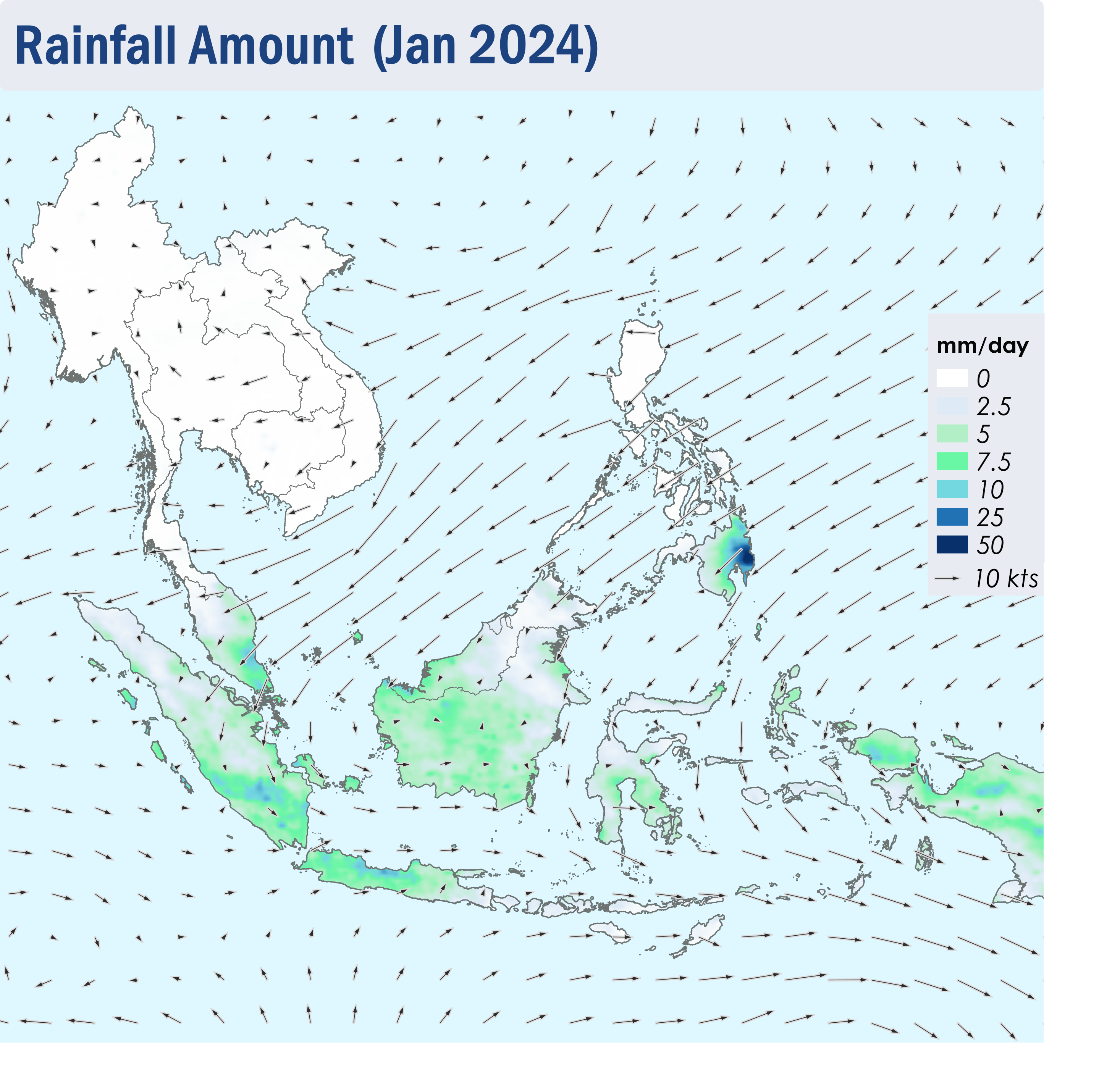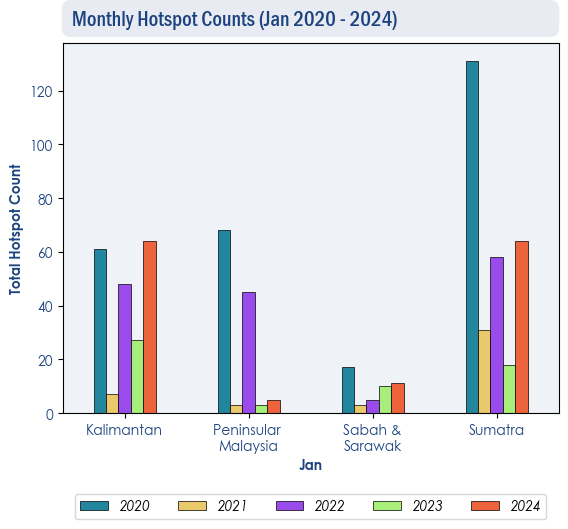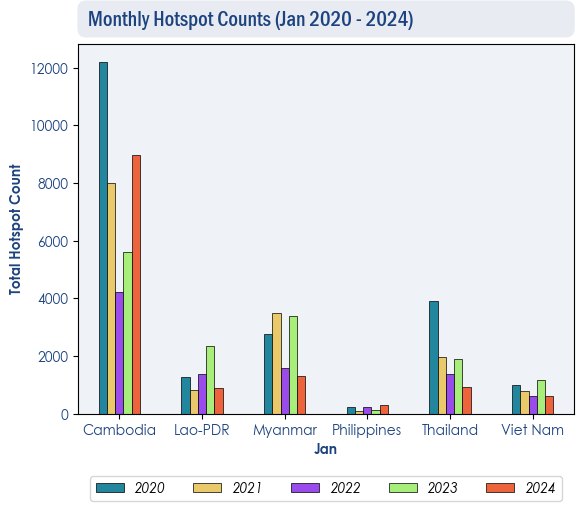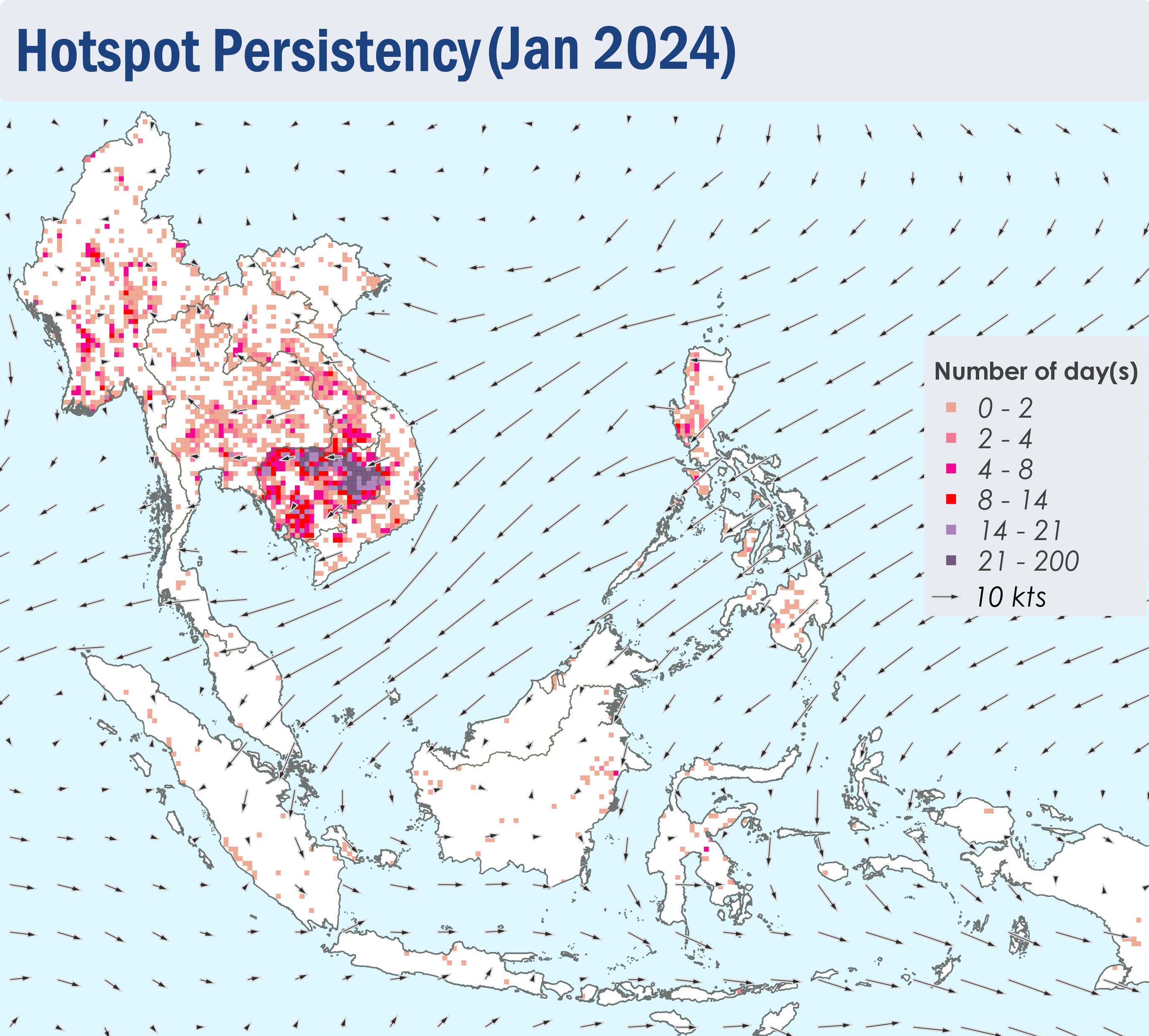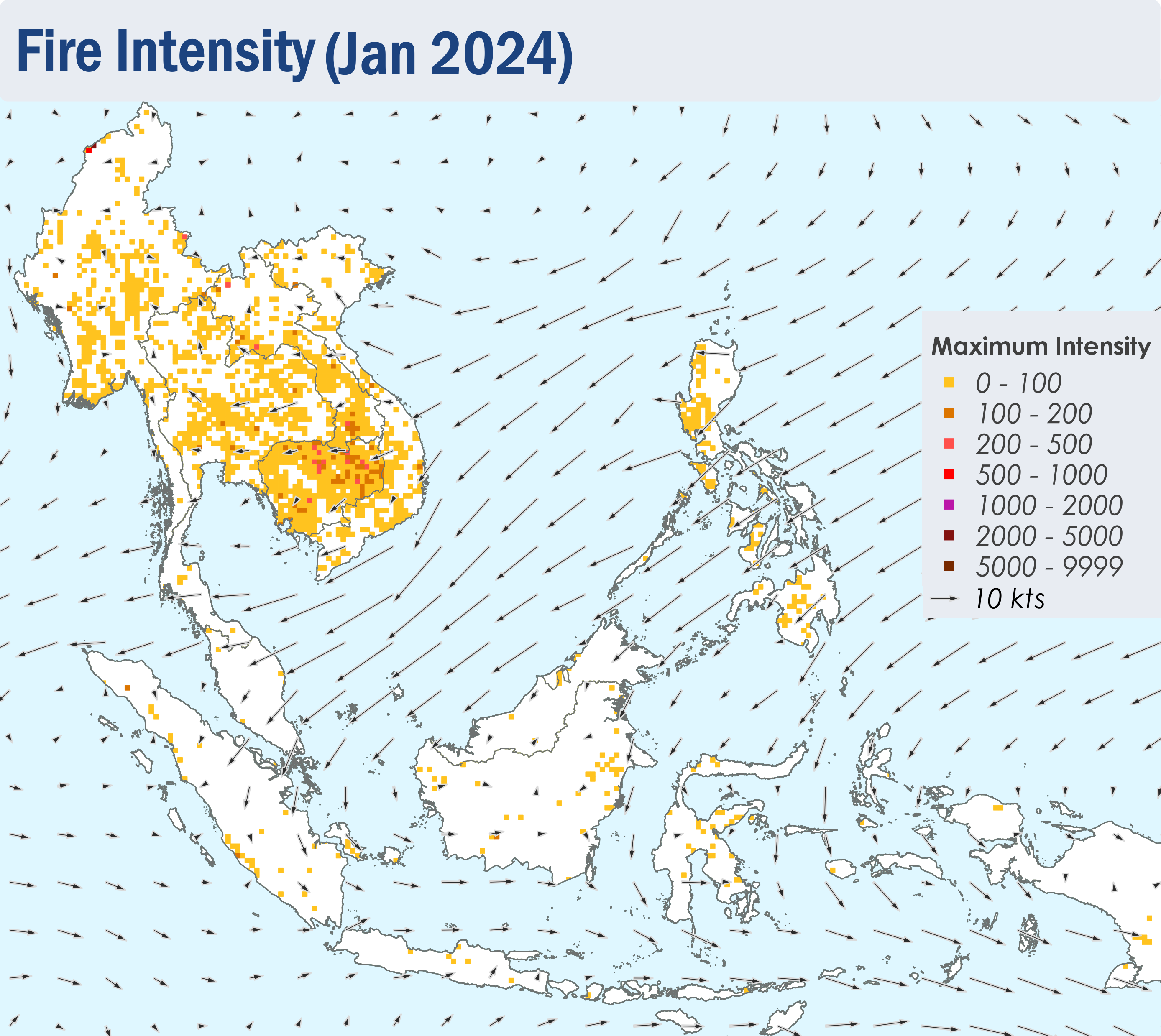Review of Regional Haze Situation for January 2024
1.1 Northeast monsoon conditions continued in January 2024, as suggested by the prevailing low-level winds. Winds over areas north of the Equator in the ASEAN region blew predominantly from the northeast or east while the winds over areas south of the Equator blew mostly from the northwest to west (Figure 1). On occasion, the northeasterly winds strengthened over the South China Sea, and brought periods of cloudiness and widespread rainfall associated with the monsoon surge to parts of eastern Peninsular Malaysia and Singapore.
1.2 Dry conditions persisted over the Mekong sub-region (Figure 1) under Alert Level 1. For the rest of the ASEAN region, increased rainfall was recorded except for the northern parts of the Philippines where conditions were relatively drier. Rainfall was much higher over the Mindanao region of the Philippines due to the presence of the Northeast Monsoon (Figure 1). The presence of monsoon surges continued in January which affected eastern areas in Peninsular Malaysia, causing fatalities and displacement of people, including damages to infrastructure and agriculture. (Figure 1)
1.3 The overall hotspot counts for the northern ASEAN region was generally lower in January 2024 compared to hotspots recorded for the same period in previous years, although hotspot counts in Cambodia were higher compared to the last three years. In the southern ASEAN region, the hotspot counts were generally lower or comparable to previous years (Figure 2 and 3).
1.4 Isolated to scattered hotspots were detected in the Mekong sub-region (Figure 4) and also the Philippines. Persistent clusters of moderate intensity hotspots, some with smoke plumes were observed consistently in the northeastern and eastern parts of Cambodia (Figure 4, 5 and 7).


